II W.W.
| BEFORE II W.W. | II W.W.
|
AFTER II W.W. |
| UPDATED MAR 2024 | ME - CONTACT |
 |
|
LONGINES SIDEROGRAPH |
|
|
|
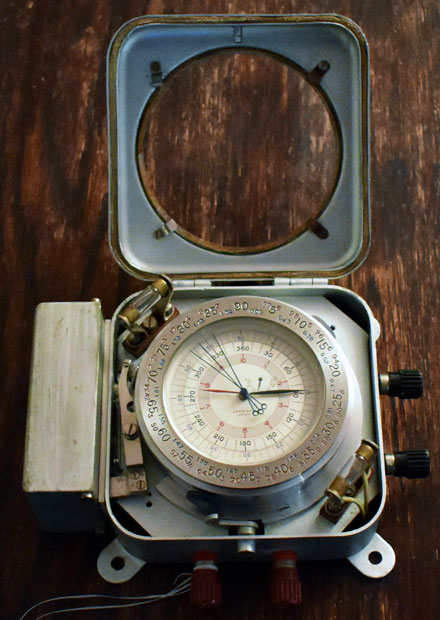 |
|
He was promoted to vice president, and collaborated with great scientists and figures of the time in the construction of increasingly complex mechanisms, the most famous being the Longines-Weems watch (a great navigation specialist of the US NAVY), designed exclusively for astronomical navigation, later simplified by Charles Lindbergh into the even more famous Hour Angle watch, designed to navigate with the sun and the stars, built by Longines at Heinmuller's initiative. Both models in the picture opposite. |
|
This is the version for airplanes. It is protected by an aluminum case with electric heating to keep the watch oils at the best operating temperature, and a light for night operation. It also has a time interval measurement device. |
|
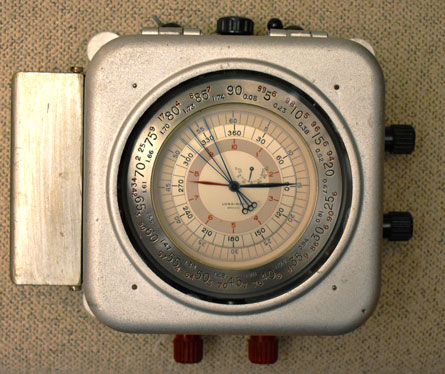 |
|
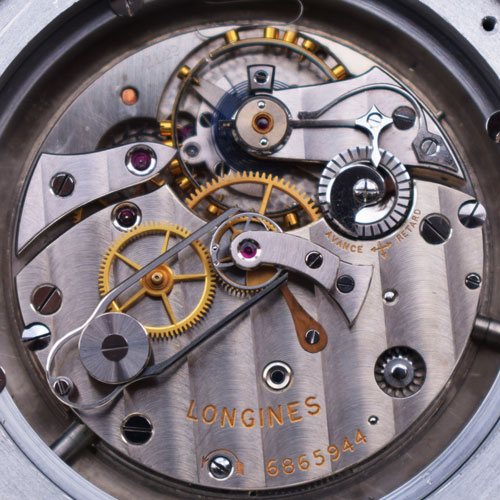 |
The Siderograf was built around 1938, in response to the demand for precision timing in air navigation. It is a caliber 21.29 chronograph, the most precise Longines movement of its time.It has a double split-seconds hand and a beryllium anti-magnetic anchor, 30-hour power reserve, stop switch at 12 o'clock, chronograph pusher at 10 o'clock, setting and winding knob at 1 o'clock, and minute dial selection knob at 7 o'clock. It was used by Howard R. Hughes to fly around the world in 91 hours. |
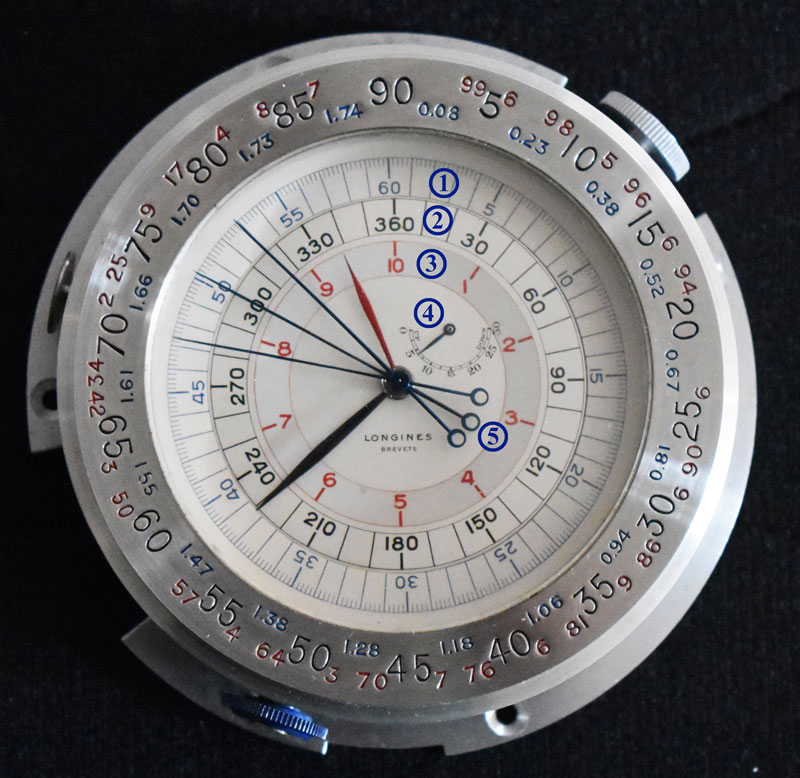 |
|
WHAT IT INDICATES::This watch does not measure time, it measures angles. The earth revolves around the sun once every 24 hours, thus it travels 360 degrees in 24 hours. The Siderograph's scale 2 shows these 360 degrees indicated by the black hand.The Siderograph is designed to work with Greenwich sidereal time, with the dial calibrated in hour angles, minutes and seconds of arc. Used in conjunction with a sextant and a chronometer set to Greenwich Mean Time, the navigator uses the Siderograph's split-second functions to establish the hour angle of the vernal equinox and thus determine the exact position.From the relationship 360º in 24 hours we obtain that in 1 hour or 60 minutes 15º are traveled, and that 1º corresponds to 4 minutes. In scale 3 we have degrees, 10º for one revolution which takes 40 minutes, it is indicated by the red hand.In scale 1 we have minutes of degree, each degree is divided into 60 minutes, and they are indicated by the three split-seconds hands number 5.Number 4 is the power reserve indication.The outer bezel is used for dead reckoning navigation, and helps in solving trigonometry formulas. |
|
THE PLANE |
|
The LOCKHEED MODEL 14 SUPER ELECTRA was a low-wing, retractable-gear twin-engined aircraft designed as a medium-sized airliner.It was based on the Model 10 designed by Kelly Johnson at Lockheed, with the classic Lockheed H-tail configuration with vertical fins and rudders placed at the end of the stabilizer. |
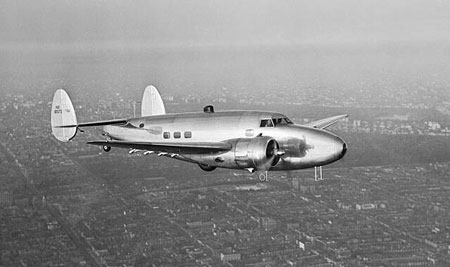 |
It was 14 meters long and 20 meters wide, with a maximum speed of 250 knots, 402 km/h, and a ceiling of 24,500 feet or 7,468 meters.The Lockheed Aircraft Company, based in Burbank, California, came up with the idea of offering Hughes, at no cost, the Lockheed Super Electra 14-N2, serial number 1419.The company's executives thought that the publicity generated by a round-the-world flight would justify the expense. The aircraft underwent two months of modifications at the Burbank factory. The Curtiss-Wright Corporation provided new engines. The fuel capacity was increased to 1,844 gallons (6,980.3 liters) and three radio systems were installed. |
|
THE NO RECORD OF HOWARD HUGHES AROUND THE WOLD FLIGHT |
|
In 1937, the disappearance of Amelia Earhart in the South Pacific during her attempt to fly around the world impacted millionaire Howard Hughes. Hughes decided to replicate her feat, but fearing a similar fate, he left a will with special instructions:The First National Bank would keep the will for 3 years without distributing the inheritance.If Hughes disappeared for 3 years, he would be presumed dead and the inheritance would be distributed.. |
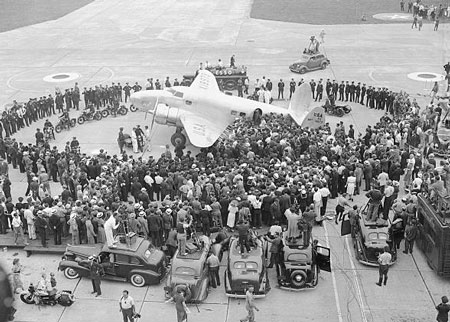 |
Hughes, determined to fly around the world despite not having government permission, took off on July 4, 1938 from Floyd Bennett Field in Brooklyn. His crew consisted of: |
|
|
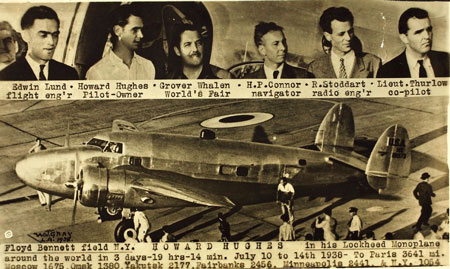 |
1 FLIGHT On July 10, 1938 at 7:00 PM, Hughes and his crew took off for Paris, the first leg of 5,859 km. The route took them over Boston, Nova Scotia, Newfoundland, and then over open sea until they reached Ireland. Fuel consumption was higher than expected and they arrived in Paris just in time.2 FLIGHT Hughes and his crew headed for Moscow, but the Nazi government denied them permission to fly over Germany. Instead, they flew over Scandinavia. Upon arrival in Moscow, they were greeted by a crowd, but Hughes was only concerned with refueling and continuing the journey in less than two hours.3 FLIGHT They headed for Omsk, 2,500 km east of Moscow. The "airport" turned out to be very rustic with some lights marking the landing direction; the conditions were so precarious that the refueling was done with a hand pump.4 FLIGHT In the midst of a storm they took off for Yakutsk, the coldest city in the world near the Arctic where those who received them saw the logo of the 1939 New York World's Fair on the fuselage and thought that it was already 1939 in the US and they were still in 1938, and wanted to know how they had gained a year.5 FLIGHT Their next stop was Fairbanks, Alaska. Due to the delays they had experienced at each stop, they flew during the day while crossing the Alaska Range, whose altitude was much higher than what the maps they were carrying indicated. If they had flown at night, they would have probably crashed somewhere.6 FLIGHT From Fairbanks they left for Minneapolis. The original plan was to make a stopover in Winnipeg, but a storm forced them to change course, and after 91 hours of flying, Hughes finally landed in New York again on July 14th. |
|
The distance traveled by Hughes was approximately 14,800 miles (23,818 kilometers) according to some sources, although there are discrepancies. The total duration of the trip was 91 hours, 14 minutes, and 10 seconds, with an actual flight time of 71 hours, 11 minutes, and 10 seconds. The average speed of the flight was 206.1 miles per hour (331.7 kilometers per hour). |
|
The Fédération Aéronautique Internationale (FAI), the international organization for flight records, requires that an aerial circumnavigation cross all meridians in one direction and cover a minimum distance equivalent to the Tropic of Cancer (22,858.729 miles or 36,787.559 kilometers). Howard Hughes' "around the world" flight circled the northern hemisphere and fell short of the required distance by at least 8,058 miles (12,968 kilometers), so no official record was set. |
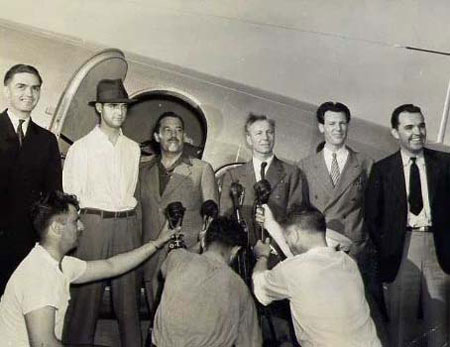 |
However, the National Aeronautic Association did award the Aero Club Trophy (known as the Robert J. Collier Trophy or simply the Collier Trophy since 1944) to Howard Hughes and his team "for their epic flight around the world in 91 hours and 14 minutes." The Collier is an annual award that is given for "the greatest achievement in aeronautics or astronautics in America, with respect to improving the performance, efficiency, and safety of air or space vehicles, the value of which has been thoroughly demonstrated by actual use during the preceding year." |
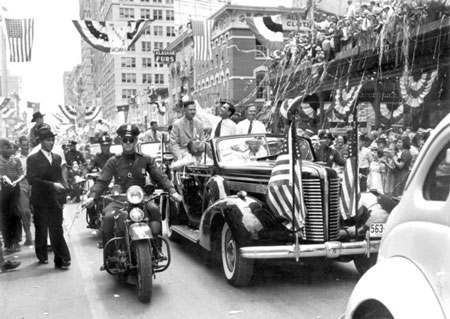 |
GO TO - CLOCKS FOR SALE |
GO TOP OF THE PAGE |
HOME |